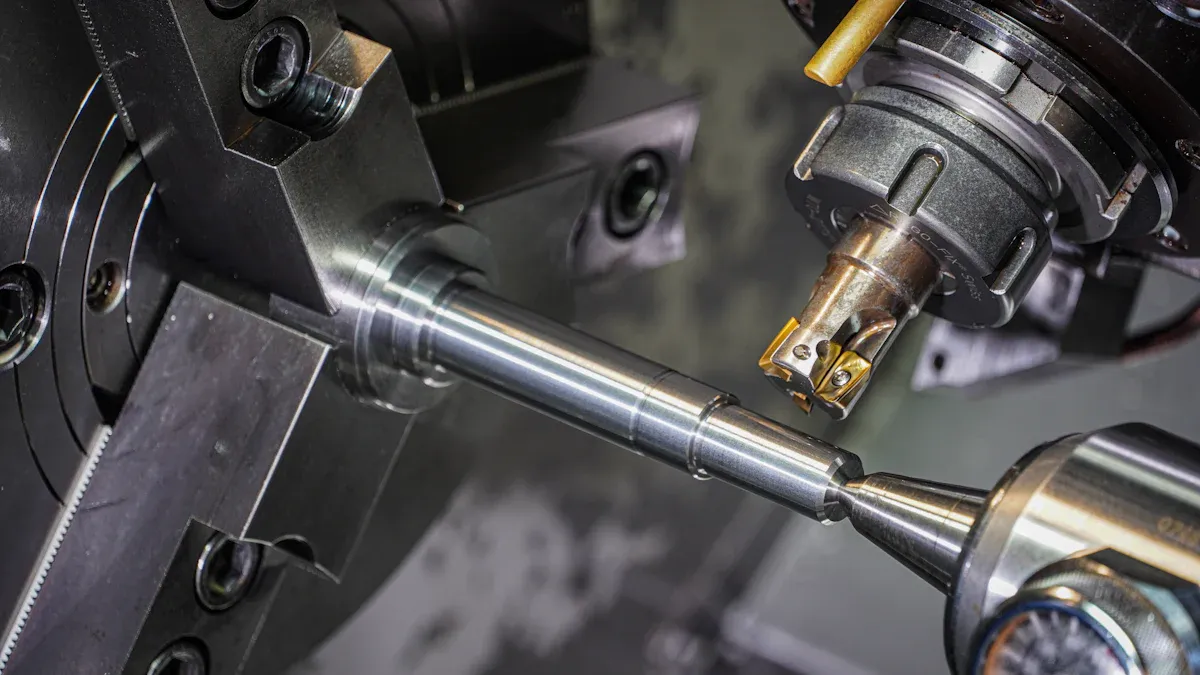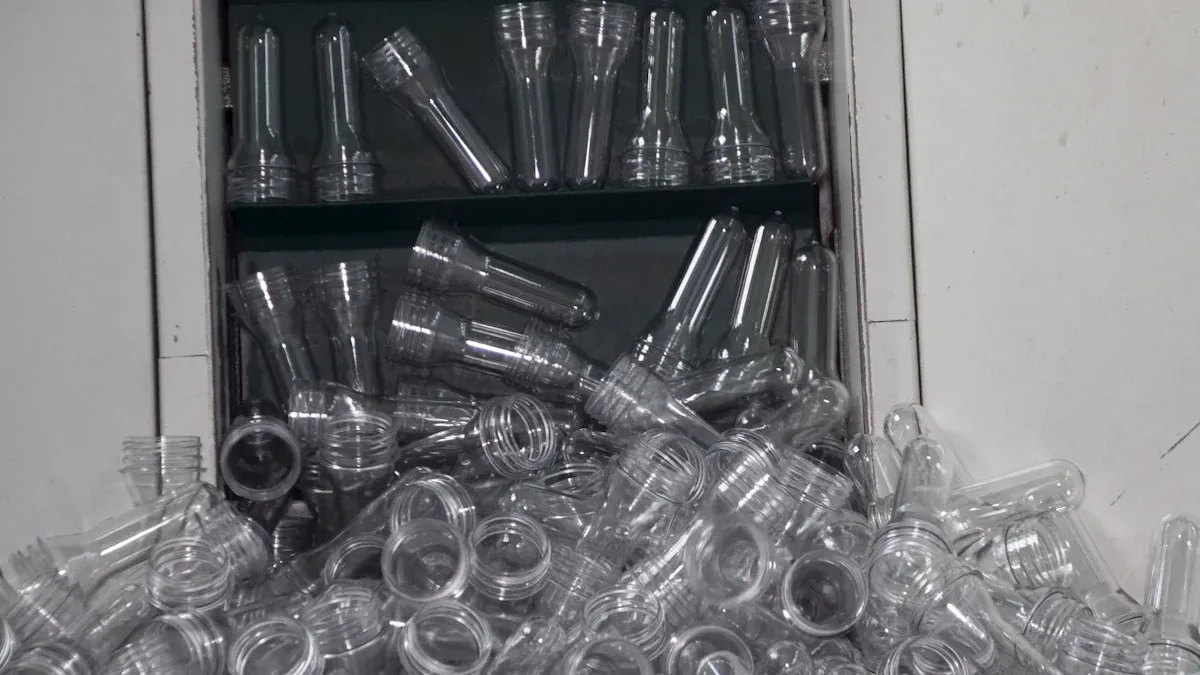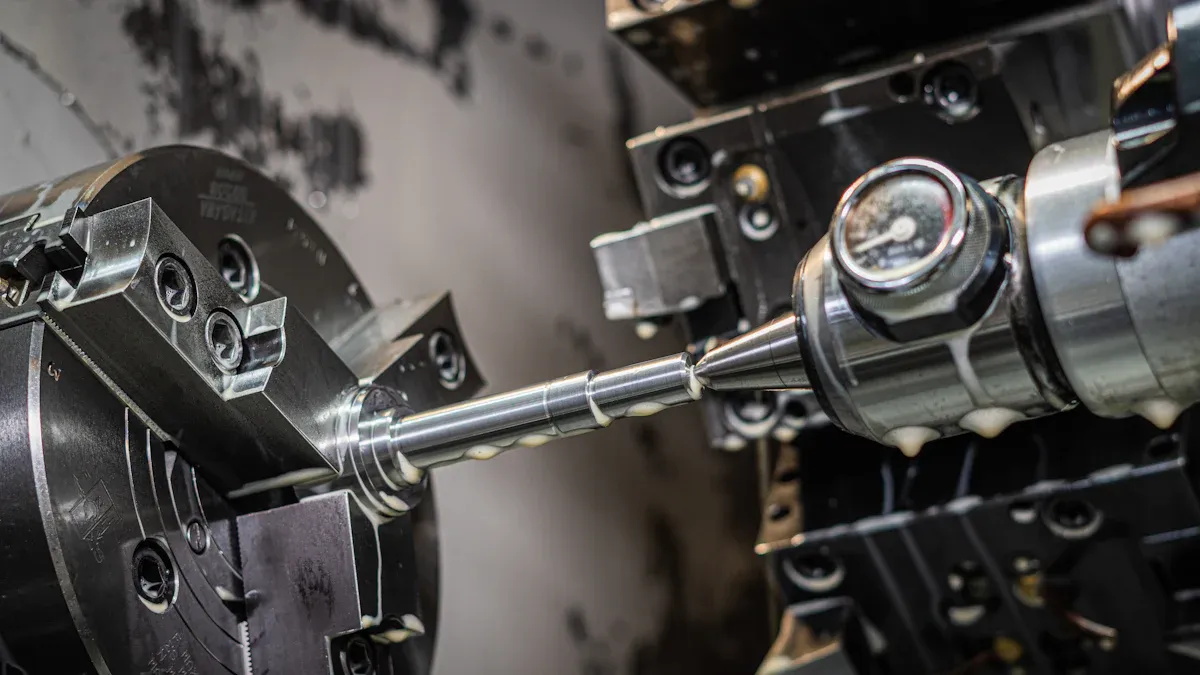
Lowering costs in injection molding production is crucial, especially when you're dealing with high-volume manufacturing. Every small saving adds up, whether it's through smarter material choices or cost-effective design. By focusing on lower costs through cost reduction techniques and identifying key cost drivers, you can improve your price-per-piece cost and achieve significant savings. Cost-saving solutions not only boost your bottom line but also make your production process more efficient. With the right strategies, your efforts to lower costs can transform your operations into a leaner, more profitable system.

When you optimize your design for manufacturability (DFM), you make sure your parts are cost-effective and easy to produce. This approach considers factors like material selection, mold design, and production methods to create parts that meet your needs without breaking the budget. For example, Toyota’s DFM practices reduced part variety, saving costs and simplifying production. Similarly, Apple’s unibody design for the iPod streamlined assembly and cut expenses.
By focusing on DFM, you can avoid complex features that require intricate molds or extra manufacturing steps. This not only lowers tooling costs but also speeds up production. A consumer electronics company once reduced material costs by 25% using DFM principles. If you want to achieve similar savings, start by evaluating your current designs and identifying areas to simplify.
Keeping wall thickness consistent is a simple yet powerful way to lower costs in injection molding. Uniform walls ensure better material flow, reducing waste and production costs. They also help with heat distribution, preventing issues like thermal distortion or shrinkage. Plus, consistent thickness improves the surface finish of your manufactured parts, making them look and perform better.
Research shows that smaller parts with uniform walls cool faster, cutting cycle times and overhead costs. If your designs have varying wall thicknesses, you might face problems like uneven cooling or structural instability. To avoid these issues, aim for a design with consistent thickness throughout.
Draft angles are a small detail that can make a big difference in production. Adding a slight angle to your mold design helps parts eject smoothly, reducing friction and preventing damage like wall scraping. This simple adjustment lowers costs by improving efficiency and avoiding delays caused by stuck parts.
Draft angles also allow plastic to shrink naturally during cooling, which minimizes suction force and makes ejection easier. Including this feature in your mold design ensures smoother production and fewer interruptions. If you’re looking to optimize plastic parts design, don’t overlook the importance of draft angles—they’re a cost-saving game changer.
Simplifying the geometry of your parts is one of the easiest ways to reduce injection molding costs. Complex designs often require intricate molds, which take more time and resources to produce. By removing unnecessary features, you can streamline the mold design and lower costs. For example, simpler shapes use less material and reduce the risk of defects during production.
Think about it this way: the fewer details your parts have, the faster and more efficiently they can be manufactured. This approach not only saves money but also speeds up the entire production process.
Over-engineering happens when you add features or details that aren’t essential to the function of your parts. While it might seem like a good idea to make your design more robust, it often leads to higher costs. Extra features mean more work for the mold, which increases both time and expenses.
Instead, focus on what your parts truly need to perform well. By eliminating unnecessary features, you can reduce injection molding costs and avoid wasting resources. Plus, simpler designs are easier to test and modify if needed.
Secondary operations, like trimming or assembly, can add significant costs to your production. When you design your parts, aim to minimize the need for these extra steps. For instance, you can create molds that produce finished parts without requiring additional work.
By reducing secondary operations, you not only lower costs but also improve efficiency. This strategy helps you save time and ensures your production runs more smoothly.
Tip: Always evaluate your designs to see if you can remove unnecessary features or steps. A little simplification can go a long way in cutting costs.
Using recycled or regrind materials is a smart way to lower costs in plastic injection moulding. Regrind, which is recycled plastic from leftover or scrap parts, can be mixed with new materials to create high-quality products. This approach not only reduces waste but also cuts material expenses. For example, manufacturers producing parts with minimal aesthetic requirements often rely on regrind, as it offers a cost-effective solution without compromising functionality.
If you’re looking to save money, consider incorporating regrind into your production process. It’s an eco-friendly option that helps you reduce expenses while maintaining the quality of your parts.
The type of materials you choose can significantly impact your production efficiency. Some materials cool and solidify faster, which shortens cycle times and boosts productivity. For instance, standard plastics are generally less expensive and work well for a wide range of applications. On the other hand, engineering plastics may cost more but offer better properties for parts requiring extra strength.
Here’s a quick comparison to help you decide:
| Material Type | Cost Implications | Suitability for Applications |
|---|---|---|
| Standard Plastics | Generally less expensive | Wide range of applications |
| Engineering Plastics | Higher cost, but better properties | Applications requiring strength |
| Specialty Plastics | Much more expensive, exceptional properties | Highly specialized applications |
Choosing the right material can help you balance cost and performance, ensuring your production stays efficient and cost-effective.
Balancing material properties with cost is key to optimizing plastic injection moulding. You want materials that meet your quality standards without overspending. Focus on factors like availability, sustainability, and overall performance. For example:
A well-designed mold also plays a big role here. It ensures precise manufacturing, which leads to consistent, high-quality parts. By strategically selecting lower cost materials and optimizing your tooling, you can enhance production scalability and efficiency.
Tip: Always evaluate your material choices based on your specific needs. A little research can go a long way in finding the perfect balance between cost and performance.

Investing in high-quality molds may seem expensive upfront, but it pays off in the long run. Durable molds reduce the need for frequent repairs, lowering your mold manufacturing cost over time. For example, a leading automotive parts manufacturer used innovative mold designs to cut material usage by 15%. This not only reduced costs but also improved production efficiency. High-quality molds also ensure consistent quality, minimizing defects and rework.
Automation can further enhance mold performance. A consumer electronics company reduced cycle times by 30% with automated molds, boosting production capacity and cutting labor costs. By choosing cost-effective molds that prioritize durability and precision, you can achieve significant savings while maintaining quality.
Multi-cavity and family molds are game changers for high-volume production. These molds allow you to produce multiple parts in a single cycle, reducing cost per piece and improving efficiency. For instance:
| Benefit | Description |
|---|---|
| More parts per cycle | Multi-cavity molds can produce dozens of parts in one cycle, ideal for large orders. |
| Lower mold cost | Family molds eliminate the need for separate molds, cutting costs significantly. |
| Better color consistency | Multi-cavity designs ensure uniformity in color across all parts. |
A manufacturer using a 16-cavity tool increased daily production by 150%, recouping their investment in less than six months. These molds are a cost-effective solution for scaling production without sacrificing quality.
Efficient cooling channels are essential for reducing cycle times. They help dissipate heat quickly, allowing parts to cool evenly and preventing defects. Conformal cooling channels, for example, improve heat transfer and ensure uniform temperature distribution. This reduces thermal gradients and speeds up production.
SyBridge’s optimized cooling strategies cut cycle times from 9.5 seconds to 5.0 seconds, boosting daily output by 88%. Faster cycles mean more parts produced in less time, lowering costs and increasing profitability. By focusing on cooling efficiency, you can enhance both quality and production speed.
Automation is one of the easiest ways to lower costs in injection molding production. By automating repetitive tasks, you can free up your workforce for more complex operations while improving efficiency. For example, robotics can handle post-processing tasks like testing, inspection, and even labeling. This reduces labor costs and ensures consistent quality.
| Automation Example | Impact on Costs |
|---|---|
| Robots for post-processing tasks | Cuts labor costs and boosts efficiency |
| Precision assembly operations | Reduces cycle times and operational costs |
| Automated labeling and wrapping | Lowers overall production expenses |
Automation also minimizes errors and scrap rates, which can save you a lot in the long run. If you’re looking for a cost-effective process, investing in automation is a smart move.
Real-time monitoring systems are game changers for injection molding production. These systems track critical metrics like cycle time, scrap rates, and overall equipment effectiveness (OEE). With this data, you can quickly spot inefficiencies and make adjustments to improve performance.
"Machine monitoring solutions have tremendous processing power and correlate information faster and more accurately than humans. Real-time data collection transforms the production process."
For instance, dashboards can show you how actual downtime compares to planned downtime. This insight helps you optimize your production schedule and reduce waste. Companies that use real-time monitoring often see a 15% reduction in cycle time and a 30% increase in output. That’s a huge boost in efficiency and cost savings.
Downtime can be a major cost driver in injection molding. Preventive maintenance helps you avoid unexpected breakdowns by keeping your equipment in top shape. Regular checks and servicing can reduce downtime by up to 25%, ensuring your production stays on track.
| Maintenance Strategy | Impact on Production |
|---|---|
| Scheduled inspections | Fewer unexpected delays |
| Regular part replacements | Improved machine reliability |
By addressing potential issues before they become problems, you can maintain a steady workflow and avoid costly disruptions. Preventive maintenance is a simple yet effective way to keep your operations running smoothly.
Lowering injection molding costs doesn’t have to be complicated. By focusing on smarter designs, efficient tooling, and streamlined processes, you can save money while boosting productivity. Here’s a quick recap of the strategies:
These steps not only improve profitability but also simplify your production process. Take a moment to assess your current practices. You’ll find opportunities to implement these strategies and make your injection molding operations more cost-effective.
Focus on simplifying part designs and using efficient tooling techniques. These steps lower material usage and speed up production, saving you money.
Recycled materials can maintain quality if used correctly. Mixing them with virgin materials ensures durability while keeping costs low.
Automation reduces labor costs and minimizes errors. It handles repetitive tasks like assembly and inspection, making your production process faster and more efficient.